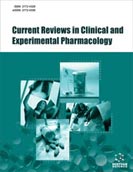Abstract
Background: Probiotic constitutes viable microorganisms that exhibit a beneficial effect on the host. Due to rapidly increasing awareness among consumers about wide therapeutic applications of probiotics, plenty of commercial probiotic formulations are entering to the market, hence market has shown significant rise has been observed in recent years. Probiotic products are gaining popularity across the globe, under different categories such as functional foods, dietary supplements, natural health products etc. Probiotics have been a functional component of health foods but till date no legal definition exists for the term ‘probiotic’.
Discussion: The term is interpreted differently by different countries and hence regulatory guidelines vary as per their intended use. Due to the growing interest in using diverse organisms as probiotics, the identification of these microorganisms upto strain level is becoming essential. So, bacterial identification should have prime importance while formulating any probiotic dosage form. Identification up to a satisfactory level i.e. genus, species and even strain level can only be achieved by polyphasic approach by using combination of phenotypic and genotypic methods. Conclusion: Present review summarizes current status of various identification techniques, which are being used for probiotics, shortcomings of current scenario, and furthermore how it necessitated bringing polyphasic approach.Keywords: Probiotics, polyphasic approach, DNA-DNA hybridization, 16S rRNA sequencing, RAPD-PCR.
 40
40 1
1 1
1




